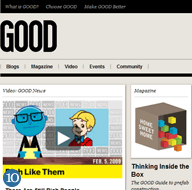Great designers know that designing is less thinking and more seeing. Because of this, they have a tendency to find areas other than design showcases or tutorials for new inspiration.
Here are some alternative or different places to find inspiration; inspiration that should help your designs stick out from the crowd. These picks of the top 6 alternative sources for design inspiration are nature, everyday items, literary inspiration, your favorite site, famous art, and architecture.
1. Inspiration in Nature
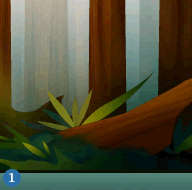
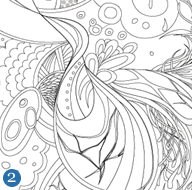
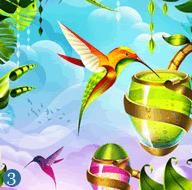
Nature is probably one of the biggest influences of design inspiration–it’s simply everywhere. However, anybody can take a picture of nature scene and turn it into web design. The web designers above did something different. They created their own compositions, while deriving their originality from various features in nature.
The left image (image 1) is just a simple header for a website. What makes the design so interesting, though, is it’s perspective. The low-to-the-ground, dusky view, is a view we don’t normally see of forests.
The middle image (image 2) is an illustration of a Phoenix. The part you see is a thumbnail of the designer’s abstract interpretation of a dandelion blowing in the wind. If you view the whole image, you’ll see other abstract areas influenced by nature, both in shape and texture.
The last image (image 3) uses illustrations of real products of nature, but as a whole the illustration is abstract in that the elements don’t necessarily fit together. Why are there bird feeders in what seems to be a desolate rain forest? And why is the background so broad as we’re viewing the closeup of the birds and leaves? These features are what make the design abstract, while still presenting real-life objects in nature.
2. Inspiration from Everyday Items
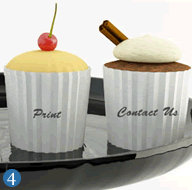
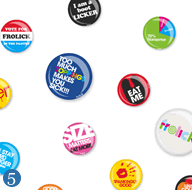
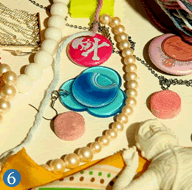
This is always a fun one. Take any random object – from your desk, your fridge, your bedroom, or wherever. Now think of ways to make it into art. Ask yourself a few of these questions to do so:
- Can this object somehow be used as navigation?
- What does this object represent? How should it make me feel? Happy? Comfortable? Frustrated?
- What other objects are related to this, and can I use it in my design as well?
As you can see, the image on the left (above image 4) uses different kinds of cupcakes to create a unique form of navigation. The middle image (above image 5) does a very similar thing, only with pieces of flare.
The last image above (image 6)is a photograph of a bunch of little random objects, or ‘junk’. By putting these objects together, they photographer has created the feelings you get from your own bedroom ‘junk drawer’, or objects that are close to you, and that provide comfort. While messy and disorganized, the calming warm hues in the photograph provide further comfort.
3. Literary Inspiration
Everyone thinks differently, right? Ever seen the movie version of a book you just read, and you didn’t like it because it looked nothing at all how you imagined in your head? The scene in the book, although not written by you, was your personal, and original, interpretation.
Find a passage of a descriptive scene, or a book plotted in an interesting place. Now make an illustration of it. You can do it digitally, on paper, or however you want. The best part about it is that it will be original, no matter what method of illustration you use.
There is no way that another designer, or any other person for that matter, will have the same outcome. Turning text into illustration is a great source for original design.
4. Inspirational Web Site
Let’s not copy, but let’s analyze. Find the site of your favorite designer. Why do you like it so much? What style do they use? How do they achieve it?
With a familiarity on the basics of design elements, such as balance, typography, color, spacing etc., it will be easy to see what you like in a design, and how to achieve the same feel.
Here are some questions to consider when analyzing your favorite website, or any website with a design you love:
- What type of design is it? Is it clean & sleek, creative, dark/light, professional?
- What is their main feature?
- Has it a large background, interesting header, use of texture?
- How to all the elements work to achieve this goal?
- Does the wide spacing make it sleek?
- Does the interesting font make it more creative?
Keep these questions in mind after you’ve come up with your own design, especially if you notice you haven’t quite grasped the feel your looking for with your current one.
5. Inspirational Art
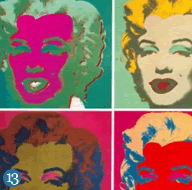

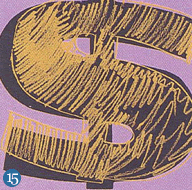
If you have a favorite artist, or a favorite style of art, think of how to build upon it.
Think of Andy Warhol for example. He took everyday faces or objects, and then portrayed them in interesting ways across a grid. In most of his compositions, he simply changed the color and contrast. He also sometimes went outside of his own theory and portrayed everyday things in more interesting ways by changing their direction or setting.
You could use his theory to create interesting web design for yourself. This also goes along with the ‘Everyday Items’ inspiration. Take an everyday object, and repeat it across a grid, change up the color, or flip it into an interesting direction.
If you like more classical art, the idea is just the same. What design elements has this era of art used, or this artist specifically? Is there a perspective point, or unique use of color? Is it realistic or abstract?
Using famous art for inspiration is about knowing what you love in design and reflecting upon it.
6. Architecture and Inspiration

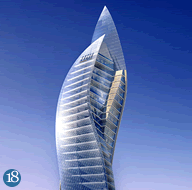
Architecture is both a use of design and functionality, very much like web design. In addition, the design of any structure presents texture, era, style, and professionalism.
As you can see from these photographs, each structure may be from a different era, and provide a different feeling. Some are a mix of different eras, such as a traditional building next to a growing city. Some represent religion, others innovation.
You can start to see how you can use these features in a web design. An innovative look will take clean lines and cool, smooth colors, as if imitating glass. A traditional looking design will use warmer colors, that imitate stone or wood. You can go beyond color, to texture and shape as well.
Even if you choose not to go for the abstract forms of interpreting architecture, you can always use beautiful architecture images in a design. Think about how you could work the interesting shape and feel of a building, or a set of buildings, into a functional web design.
Where do you find inspiration?
Those are the 6 alternative sources I’ve noticed being used by web designers, and some that I love to use myself. Do you have a different alternative source of inspiration?
Related Topics
Top
